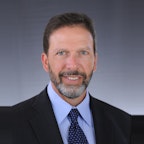This is a bundle of these 5 courses
About this course
This free training includes 16 in-depth sessions targeting building professionals (videos range in timing from around 35 minutes to a little over an hour). The education and training cover the drivers and benefits of smart building technologies, key building energy systems, the latest sensor technologies and IoT devices, and focus on topics related to smart building controls (i.e., energy management information systems, smart building control platforms, cybersecurity, grid-interactive-efficient buildings (GEBs), smart building control methods, and occupant-centric control.
Who should view this series?
- Building professionals
- Smart building software developers
- General public
Subjects covered
Bundle outline
Course 1 •
1
modules
Introduction to Smart Building Technologies
Module 1 • 2 assignments
Introduction to Smart Building Technologies
Conclusion • 2 assignments
Feedback and Additional Resources
Course 2 •
5
modules
Smart Building Systems
Module 1 • 2 assignments
Basic HVAC Systems
Module 2 • 2 assignments
Building HVAC - complex systems, Building Automation System
Module 3 • 2 assignments
Networked lighting controls and HVAC integration
Module 4 • 2 assignments
Solar PV, BESS, and EV charging
Module 5 • 2 assignments
Smart window, automated shades, thermal energy storage, phase change material, and plug loads
Conclusion • 2 assignments
Feedback and Additional Resources
Course 3 •
2
modules
Sensors and IoT Devices for Smart Buildings
Module 1 • 2 assignments
Sensors
Module 2 • 2 assignments
IoT Devices
Course 4 •
5
modules
Smart Building Controls
Module 1 • 2 assignments
Advanced building monitoring and controls
Module 2 • 2 assignments
Smart building control platform
Module 3 • 2 assignments
Smart building control platform cybersecurity
Module 4 • 2 assignments
Smart building control methods
Module 5 • 2 assignments
Occupant-centric control
Conclusion • 2 assignments
Feedback and Additional Resources
Course 5 •
3
modules
Smart Building Applications
Module 1 • 2 assignments
Grid-interactive efficient buildings and connected communities
Module 2 • 2 assignments
Review of whole-building simulation programs
Module 3 • 2 assignments
Smart building application examples
Conclusion • 2 assignments
Feedback and Additional Resources
Authors
Slipstream creates, tests, delivers, and scales the next generation of energy efficiency and renewable energy programs that move us farther, faster toward a clean energy economy. Slipstream partners with utilities, local and state governments, regulatory agencies and other organizations to inspire new solutions to big energy challenges. With decades of experience...

Joe Zhou, PhD, PE, CEM
Xiaohui “Joe” Zhou is a Director of Research and Innovation at Slipstream, headquartered in Madison, WI. Joe has 30+ years of experience in commercial building controls and his current areas of research focus on emerging technology field testing and verification. Before joining Slipstream, he worked for several organizations, including Iowa Energy Center and Johnson...

Kevin Frost, PE
Kevin Frost brings his experience in designing heating and cooling systems and HVAC controls programming to Slipstream’s Research and Innovation team. He advises Slipstream’s building consulting clients on how to ascertain their energy and sustainability goals and how best to achieve those goals. He recommends energy efficiency measures and builds energy models for the...

Scott Schuetter, PE
Scott Schuetter is a Principal Engineer at Slipstream with 13 years' experience leading research projects that focus on emerging technology performance in the built environment. His commercial building experience encompasses field measurement and modeling of emerging technology performance for energy efficiency, electrification, load shift, load shed and continuous...
Rob Kline, PE, MBA
Rob Kline is a Professional Engineer who has led renewable energy product development startups, providing engineering leadership and subject matter expertise, creating and managing technical writing organizations, and leading product and project management end-to-end lifecycles. Rob earned a bachelor’s degree in electrical and computer engineering from UW-Madison. He is...

Ron Bernstein
Ron Bernstein is CEO and Principal Engineer of RBCG Consulting, providing consulting, engineering, research, and educational services to organizations needing help navigating their energy and automation strategy. RBCG works with end users, owners, specifiers, suppliers, and integrators to develop IoT, interoperability, and open systems approaches to building automation,...

Dr. Bing Dong
Dr. Bing Dong is an Associate Professor at Syracuse University in the Department of Mechanical and Aerospace Engineering. He is also the Associate Director of the Syracuse Center of Excellence in Energy and Environmental Systems, and the lead of BESTlab. He has more than 20 years’ experience and contributions in research and education, including 1) occupant behavior...

